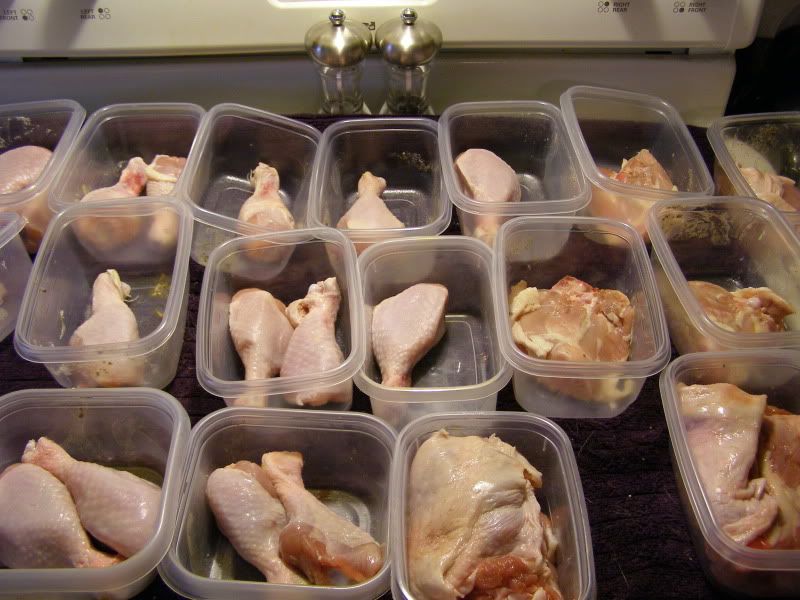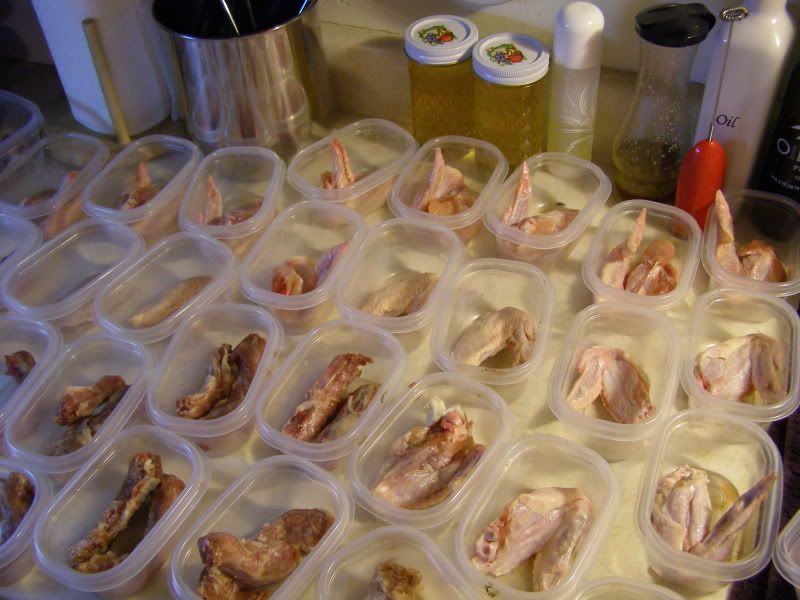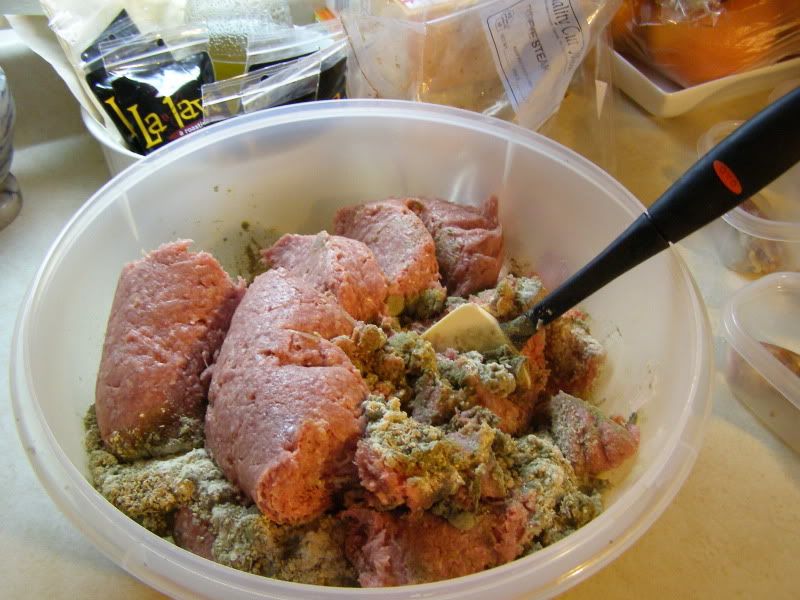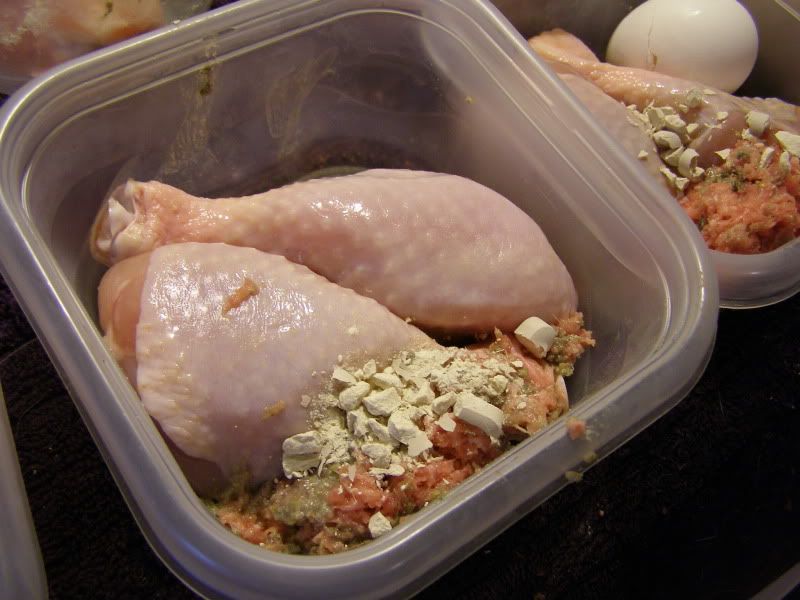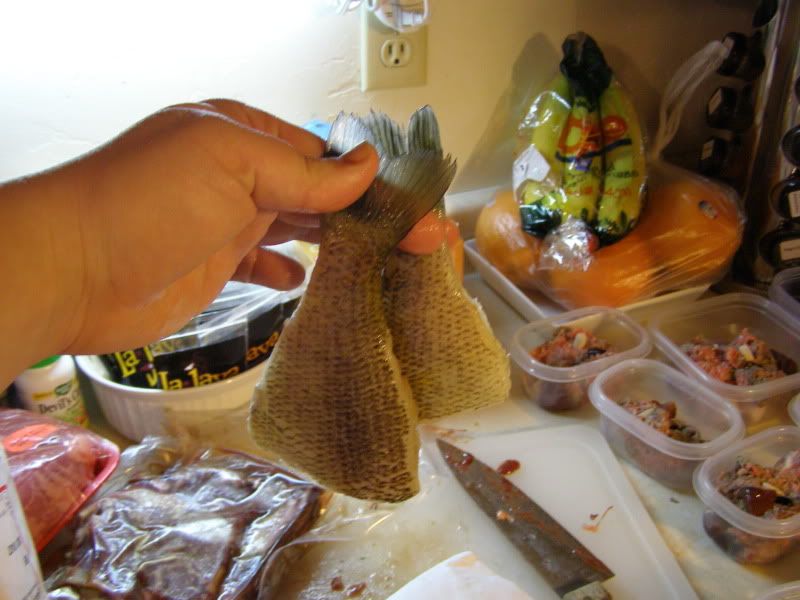As those who know me may be aware, I feed my dogs a prey model raw diet. This post is not here to convince anyone to feed raw, it's not here to diagnose problems, it's not even here to say this is what I think every dog owner should be doing - it's simply to show how *I* do it. I'm always happy to further discuss raw feeding with anyone interested. This is just here to give people an idea of one way it can be done.
Some important factors to note: I am a college student. I work. I have homework. I have two dogs, one of which will NOT tolerate a lack of exercise. I don't always have extra time to spend on feeding my dogs every day. I say this simply because one of the most common excuses people give me for not raw feeding is a lack of time. This is the way *I* have found to make it work for me and my dogs, even with time constraints.
Let's get started!
A few days ago, I took all the meat I would need for meals out of the freezer and put them in the fridge to thaw. This morning I bought any of the fresh meat I needed to buy at the grocery store. (I'm always sure to buy when I see meat on sale and toss it in the freezer for when I need it, so usually everything just comes from the freezer) It takes a little time to get the hang of just exactly how much of everything to thaw, but sooner or later you get the hang of it.
Now, it's time to get down to business.
First, turn on the radio and pour a glass of wine. (use a long stemmed wine glass so you can take a drink without putting your bloody hands anywhere near the drinking area of the glass) :)
I always set out all of my available containers so that I can best plan out how I'm going to divide everything among them and I know what I'm working with.
Once they're all spread out, I add my "bone in" meats to each container. Usually this is in the form of chicken necks, wings, legs, thighs, ribs etc. Other things can be used, but this is usually what I end up using. Bone should make up about 10% of your dog's diet. This doesn't necessarily have to be precise in each container, but it should average out in the end.
As you can see, I use two different sized containers. This is because I have a 65lb dog and a 40lb dog. An adult dog should eat somewhere around 2-3% of his body weight in meat per day. This means Bailey should eat about 1.5lbs a day and Lilly about 1lb a day. They probably eat slightly less than this for meals because they get other things to eat here and there, but this is a beginning guideline.
Next, I add eggs to some of the containers if I have some around. I could leave the eggs unbroken and the dogs would get them down just fine, but I whack them each with a knife just to get them started.
As you can see, I do NOT put an egg in every container. Eggs are great for the dogs, but one every day would be too much.
Now it's time for the real fun. It all starts with a few pounds of ground meat. I usually use turkey because my local grocery store sells nice big tubes of it for a pretty reasonable price.
This is the part where I manage to get rid of whatever suitable foods might be lingering in my fridge such as recently expired yogurt, etc.
If you happen to be delicate in the olfactory department, you might want to give yourself a little pep talk at this point. You can do it. Deep breath. Now... it's time for the green tripe.
I also add some powdered supplements to this mixture. This is not absolutely necessary. If I don't have the extra cash for them, I don't include them. I recently bought this one because it has kelp powder in it, and it was on sale. Just plain kelp powder would work just fine as well.
Alright, unplug your nose and get stirring!
I then put a little of the mixture into each container.
If I didn't want to, I really wouldn't have to include this ground mix, but it makes it easier for me to add yogurt, or supplements, or whatever else I might need to. It also makes it MUCH easier for me to add the things that are a necessity. Things such as fish oil.
Because many commercially raised meats lack the omega 3 fatty acids that good naturally raised meats would have, adding fish oil is the one supplement I consider mandatory. By using the ground mixture, I have a great spot for sticking the fish oil capsules and tricking the dogs into eating them.
Also, since I have an old man with sore hips, glucosamine and chondroitin supplements are at the top of my list of things to include. Unfortunately, the old man's delicate sensibilities are offended by tablets. So, out of pure ridiculousness, I break up these supplements for his meals. (I still can't even believe I do it)
(when this bottle is gone, we will be going back to using Joint Strong - which I like MUCH better)
The next necessity is organ meat. On average, meals should consist of 10%-15% organ meat. (5% should be in the form of liver) Kidney has been one of the easiest organ meats for me to get locally. Chicken and turkey giblets are also usually easy to get.
Beef liver grosses me out about as much as the tripe, but I still use it.
Last, but not least, I add whatever muscle meat I have to complete the 80% that an average meal should contain. A huge portion of this stuff I get for free from hunters with venison they don't want or people who forgot about the steaks in their freezers. Every once in a while I will find beef on a great deal at the store, and I know a few people who have cattle and I can get good deals on the "less desirable" meat when they butcher. Lastly, I can buy beef heart for around $1 a pound special order from my local grocery store. (yes, I know heart is physiologically considered an organ, but it's pretty much all muscle so it's counted as muscle meat)
This summer I'll be getting myself a fishing license to see how much of this I can catch for myself. These were free from a driver at work.
And there you have it folks. A solid month's worth of meals.
All I have to do now is pull it out of the freezer, run water over the outside of the container, pop it out onto the dogs' mat, and let them chow down.
(I like feeding it frozen because it slows the dogs down, doesn't smell at all, and is good for gnawing)
Total elapsed time: 1 hour 35 minutes
(and 10 of this was wasted fighting with those god-forsaken Glad containers with the green lids on the left - never buy those, they will make you want to rip your hair out!)
Total elapsed time: 1 hour 35 minutes
(and 10 of this was wasted fighting with those god-forsaken Glad containers with the green lids on the left - never buy those, they will make you want to rip your hair out!)
Now, all that's left to do is sanitize EVERYTHING! Healthy dogs can handle e.coli and salmonella, humans cannot. Make sure you're using something that will kill these bacteria and give it a minute to do it's job before you wipe it down. Also, be sure to get the handle of the freezer well, remember you'll be touching that every time you feed your dogs!
Now, if you'll excuse me, I'm going to go figure out how in the world I'm going to sanitize my camera. :)
~Lioness



